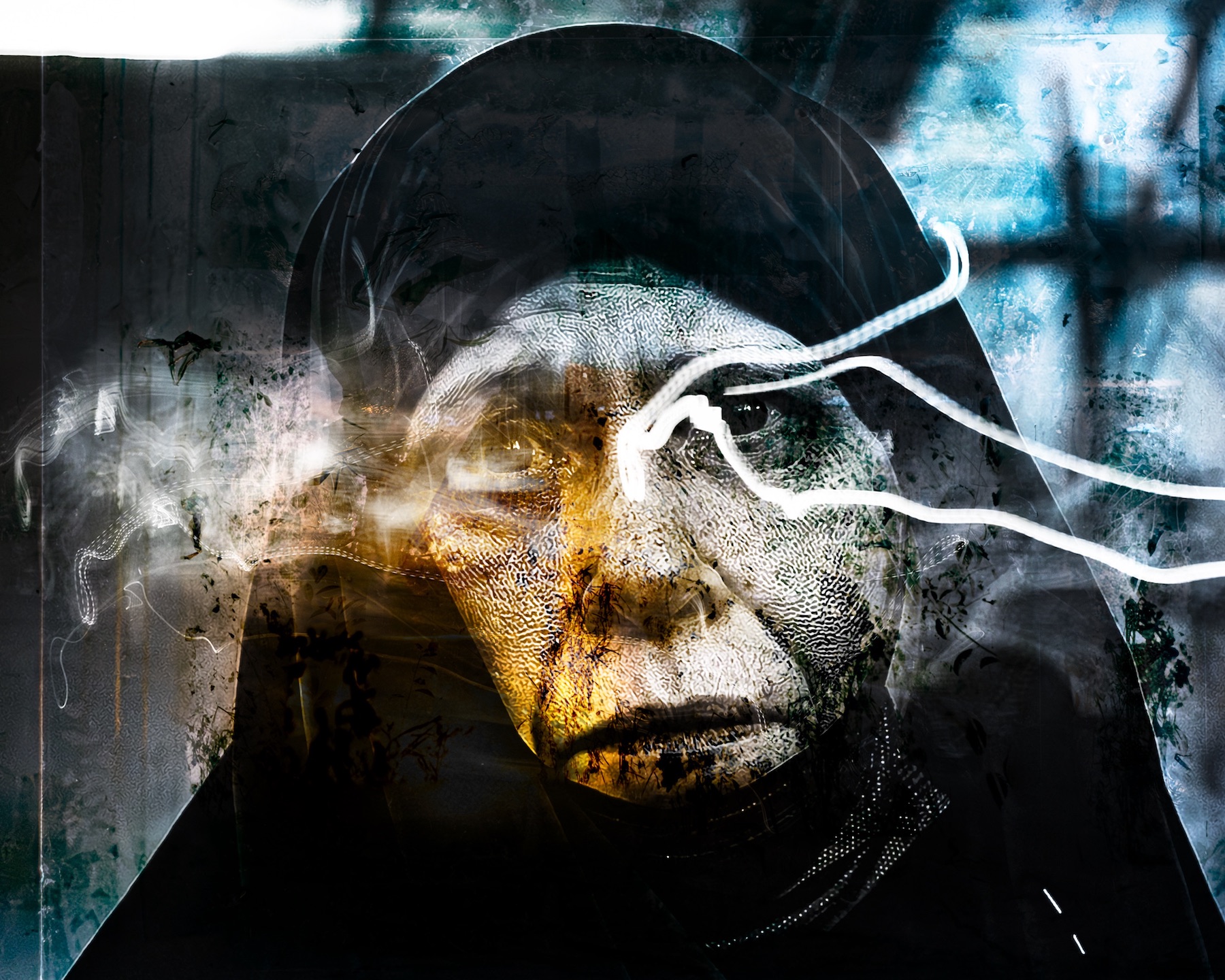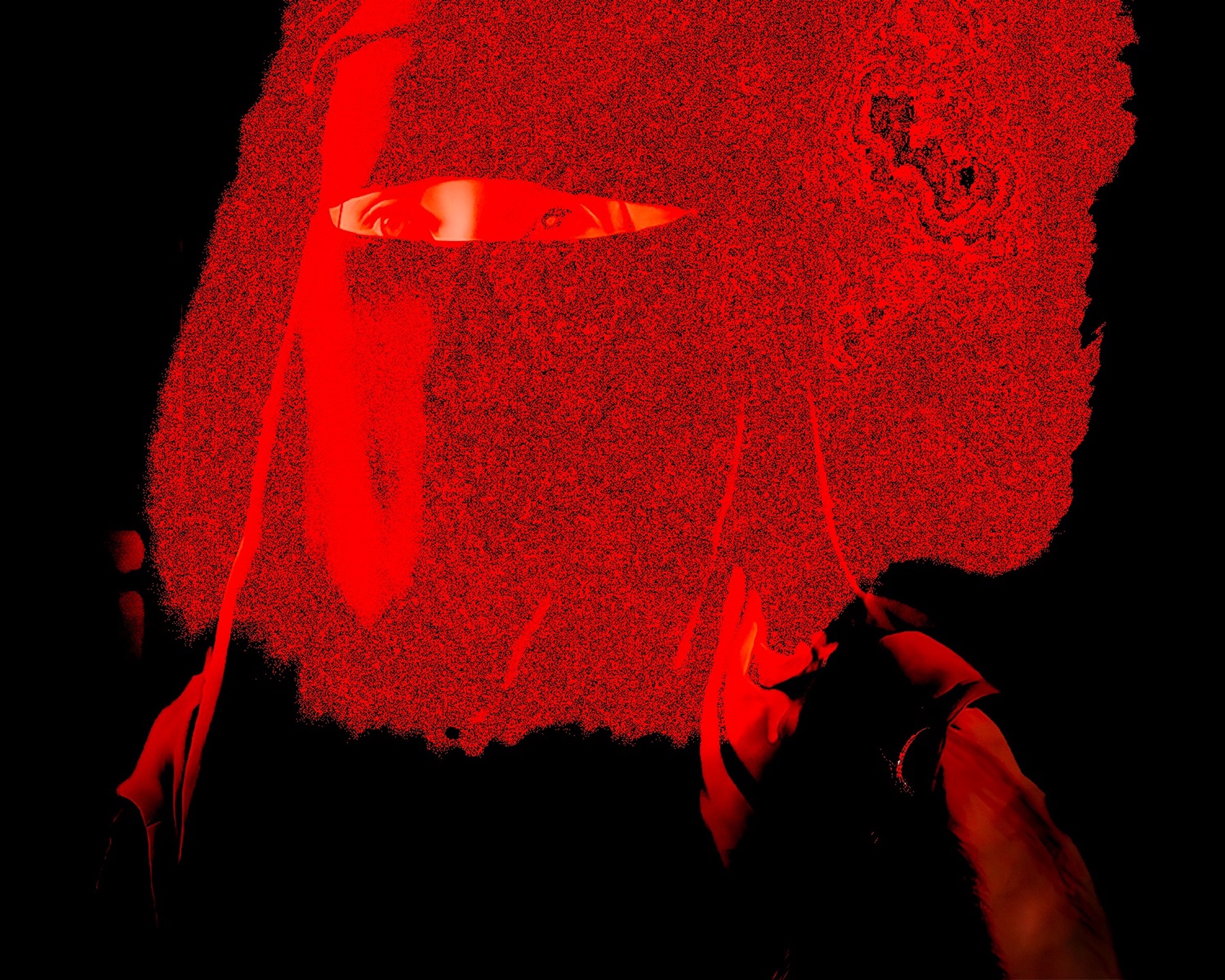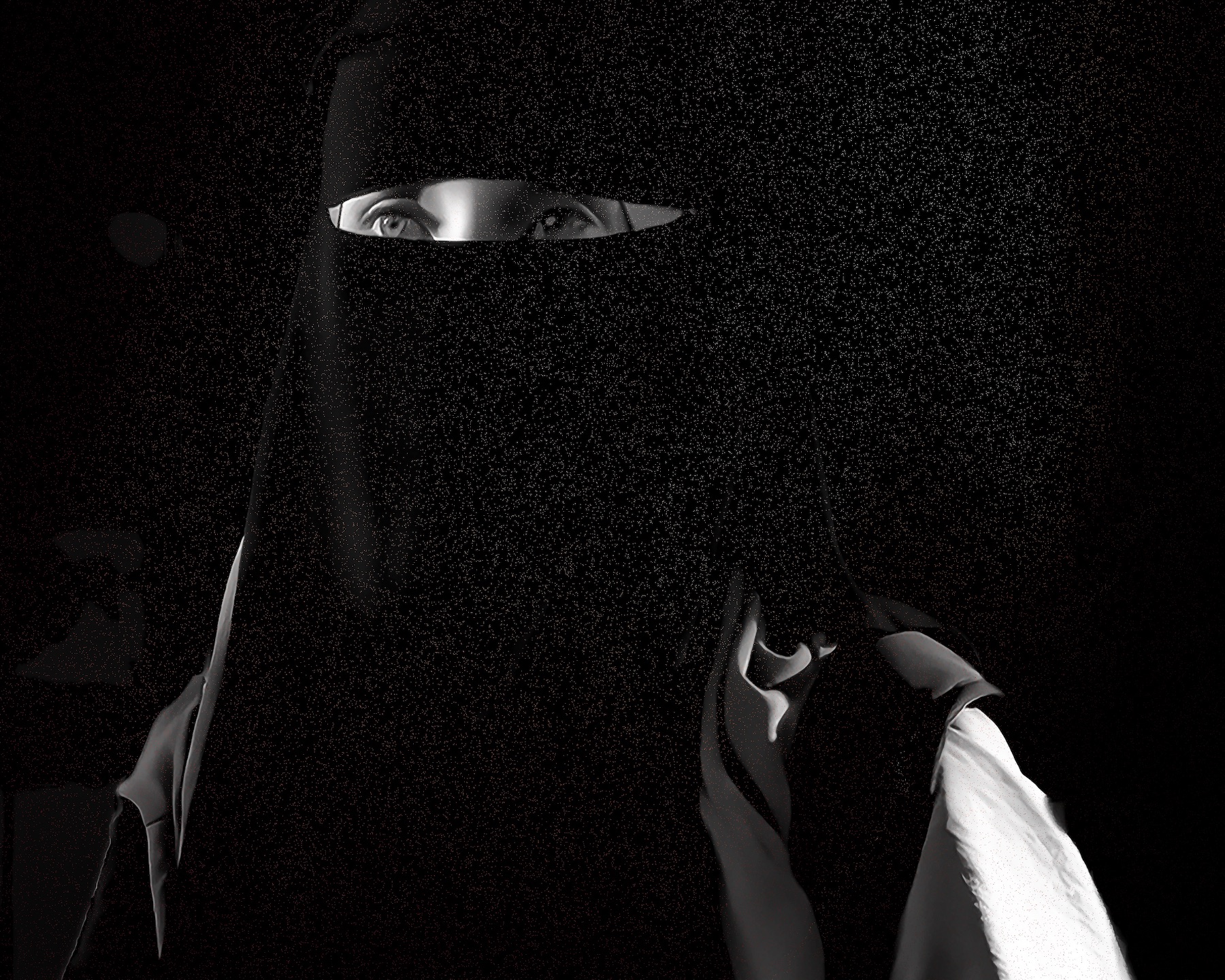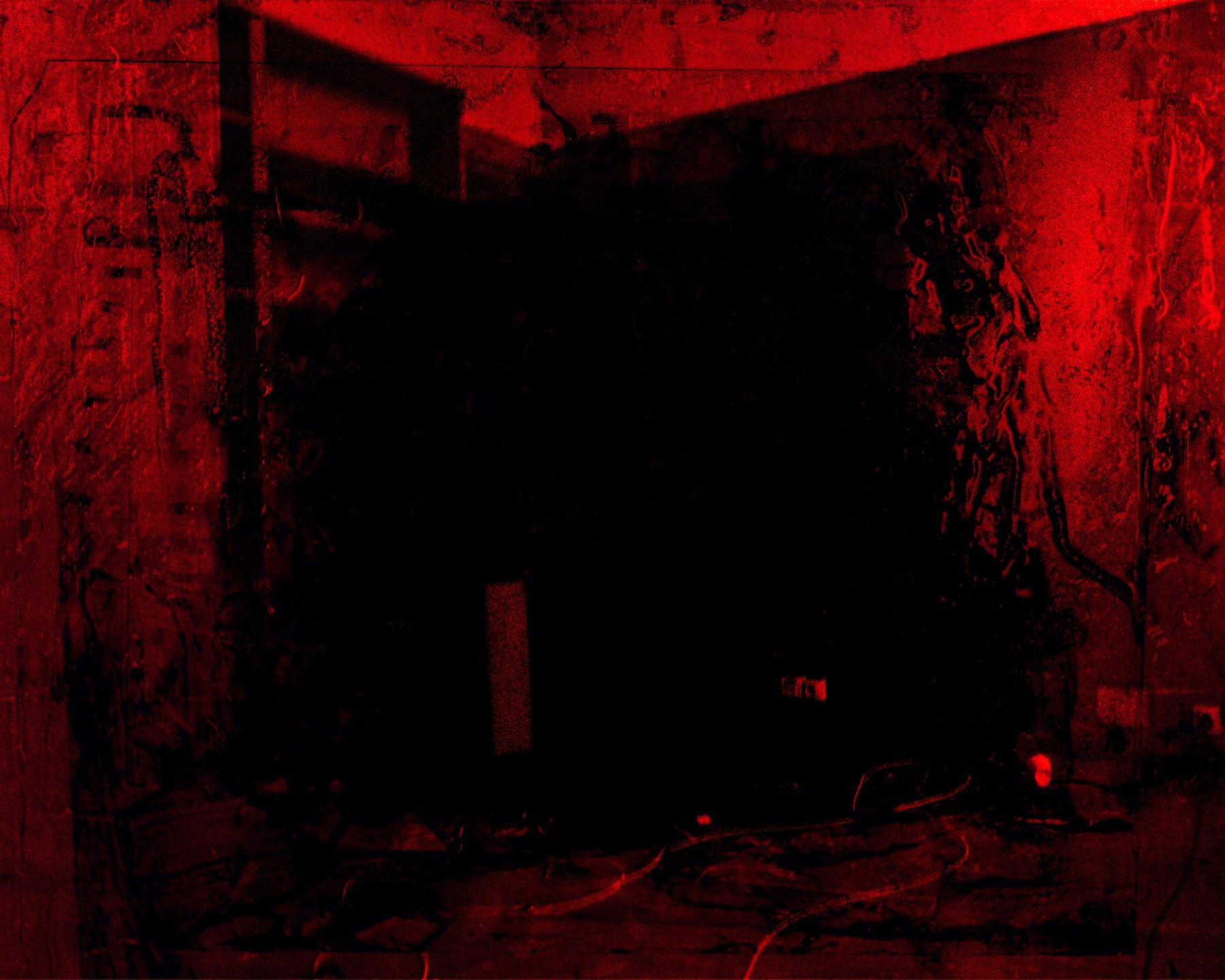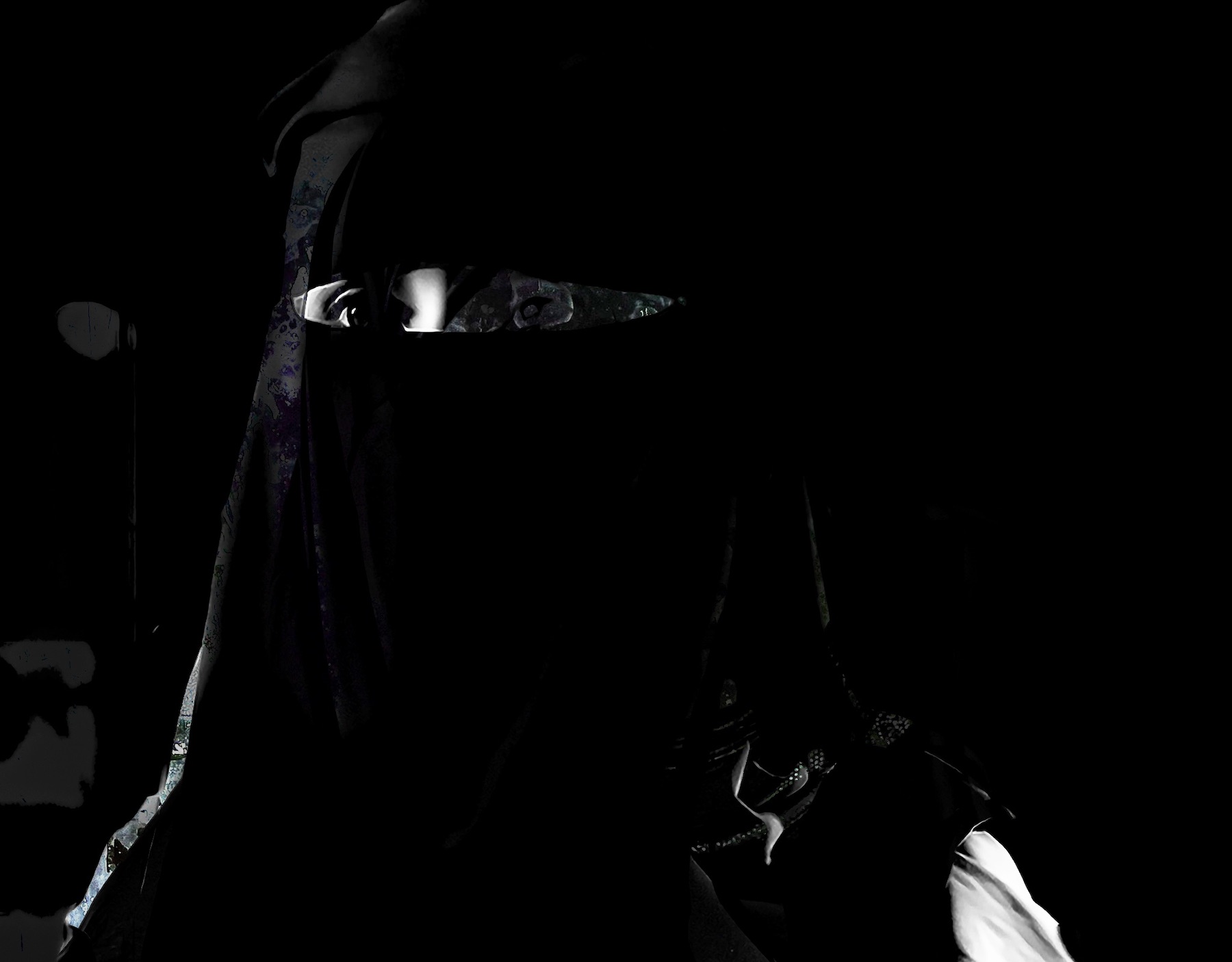This body of work sits at the intersection of concealment, identity, and emotional intensity, using light, shadow, and colour as its primary vocabulary. Faces recur as obscured forms—veiled, masked in darkness, or swallowed by red haze—signalling the instability of visibility and the politics of the gaze. Eyes, luminous and insistent, become both sites of vulnerability and anchors of identity: asserting presence against concealment.
The overwhelming use of red transforms space into a field of emotion: wound, heat, danger, and vitality at once. Saturating entire environments, red ceases to be descriptive and instead becomes an atmosphere—an immersive translation of inner states into external space.
Distortions, fractured light, and textured surfaces reinforce fragmentation and dislocation. These gestures echo handwritten reflections—“broken at the end of the day”—summoned through ritualistic language. Here, distortion is not only destructive but generative: pointing to transformation, hybridity, and the possibility of reconstituting the self through art.
The insertion of urban and industrial ruins extends the personal into collective terrain, aligning bodily and emotional rupture with landscapes of decay. In doing so, the work addresses deterioration, survival, and renewal—always more than autobiography.
Ultimately, the series acts as both witness and ritual: testimony to turbulence and an attempt at transfiguration. By blending concealment with revelation, wound with beauty, and decay with resilience, the work confronts fragility while asserting a persistent, luminous presence.
This is not a celebration of endurance. Each week of making sharpened my anger at the world. I refuse to glorify survival, to praise resilience as virtue, or martyrdom as beauty. Instead, I freeze the moment of collapse, where women—especially those rendered invisible by colonial, patriarchal, and racist systems—are forced to navigate daily violence with grace they were never meant to perform. This is not admiration. This is exposure.
The women here are not symbols of strength. They do not exist for sympathy, awe, or praise. In conversation, they reminded me: the light is already within us; the cracks are not an entry point but an escape—how we become seen, felt, known. Not broken. Not empty. Not waiting.
This work explores tension, vulnerability, destruction, endurance, the reclaiming of agency, and the collapse of systems in “a time of monsters.” It searches the fractures in dominant narratives and what might emerge from chaos.
My own path began in 2014 through photojournalism, leading to a master’s in crisis and conflict reporting in Denmark. By November 2024, I walked away. The media felt broken. Guided by David Wagoner’s poem Lost, I left Denmark, crossed Europe by train, revisited my birthplace in Germany and ancestral grounds in the U.K., before turning the lens inward and returning to Aotearoa in January.
In the darkroom, I embraced fragile, nineteenth-century silver-gelatin-on-glass processes. Their cracks, streaks, and unpredictable surfaces became collaborators—holding both material and emotional scars.
This work is not about healing. It is about holding, witnessing, and confronting the unbearable weight of being made to endure. Not a tribute. A confrontation.
I am not the wound.
I am not what they forgot.
I am not the silence handed down to me.
I am the one who kept walking.
I am the one who saw.
I am the one who feels—especially now.
I am the one who remembers.
I do not owe beauty.
I do not owe explanation.
I owe only truth, breath, and rest.
Grief can walk beside me,
but it will not hold the reins.
Memory is not quiet.
It does not ask for permission.
It shouts.
It whispers.
It grinds into the cracks of our skin.
I remember because the earth remembers,
because soil hums with stories older than time,
passed through hands,
through fire,
through bone.
I remember because silence is a hollow dressed as peace,
because forgetting is a wound
that festers in the dark.
And some things cannot be erased.
Some truths always rise,
carrying the weight of land,
of women,
of stories they tried to bury.









